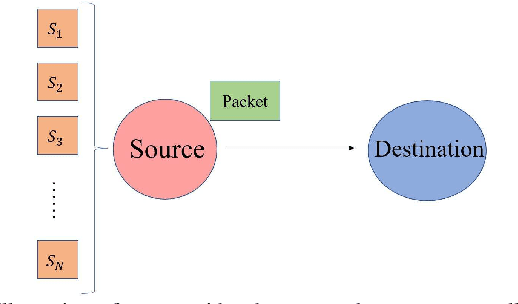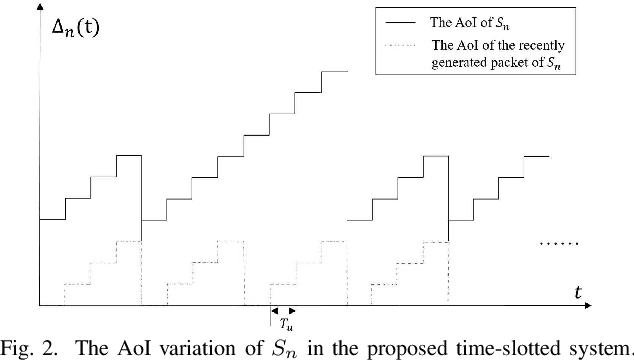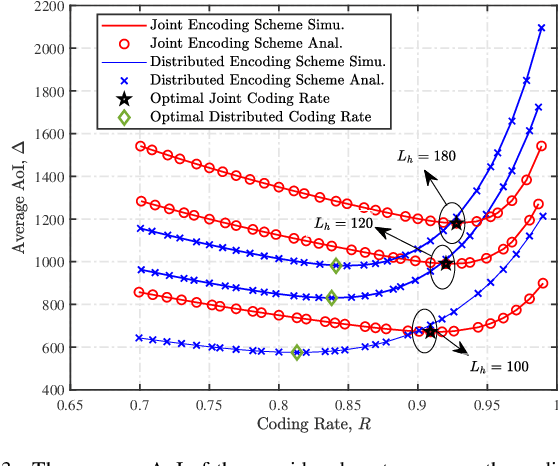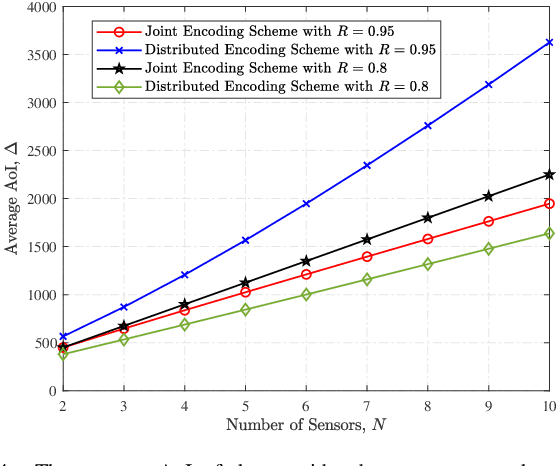The Age of Information of Short-Packet Communications: Joint or Distributed Encoding?
Paper and Code
Nov 04, 2021



In this paper, we analyze the impact of different encoding schemes on the age of information (AoI) performance in a point-to-point system, where a source generates packets based on the status updates collected from multiple sensors and transmits the packets to a destination. In this system, we consider two encoding schemes, namely, the joint encoding scheme and the distributed encoding scheme. In the joint encoding scheme, the status updates from all the sensors are jointly encoded into a packet for transmission. In the distributed encoding scheme, the status update from each sensor is encoded individually and the sensors' packets are transmitted following the round robin policy. To ensure the freshness of packets, the zero-wait policy is adopted in both schemes, where a new packet is immediately generated once the source finishes the transmission of the current packet. We derive closed-form expressions for the average AoI achieved by these two encoding schemes and compare their performances. Simulation results show that the distributed encoding scheme is more appropriate for systems with a relatively large number of sensors, compared with the joint encoding scheme.
 Add to Chrome
Add to Chrome Add to Firefox
Add to Firefox Add to Edge
Add to Edge